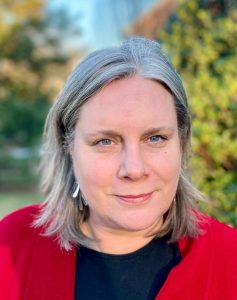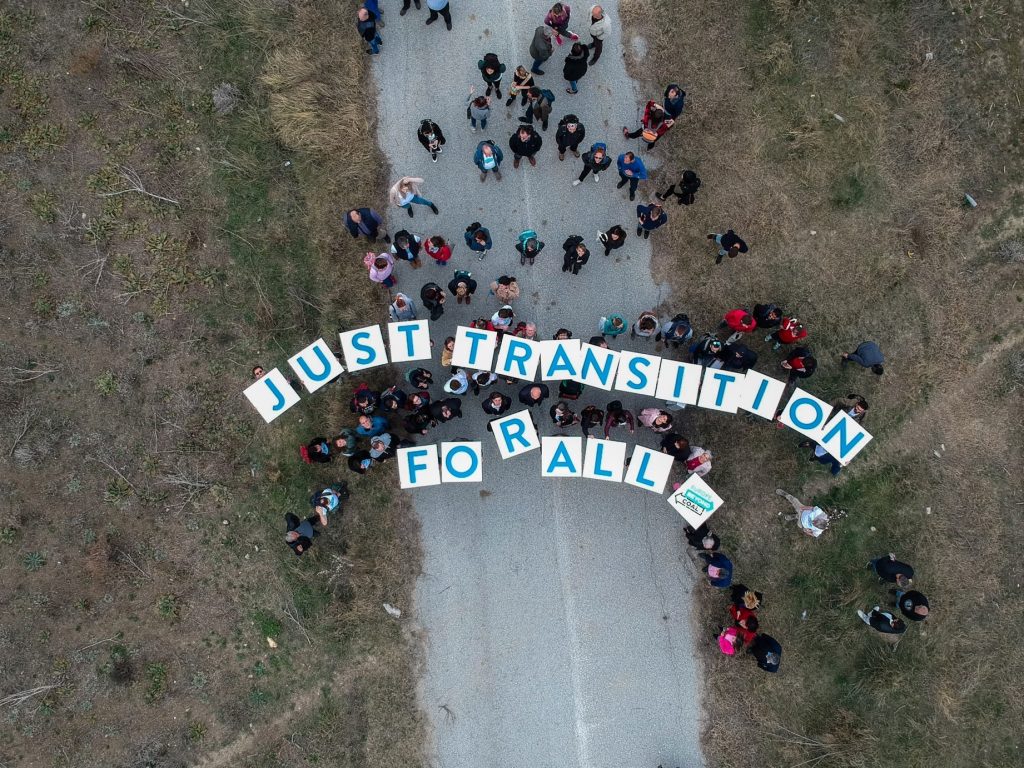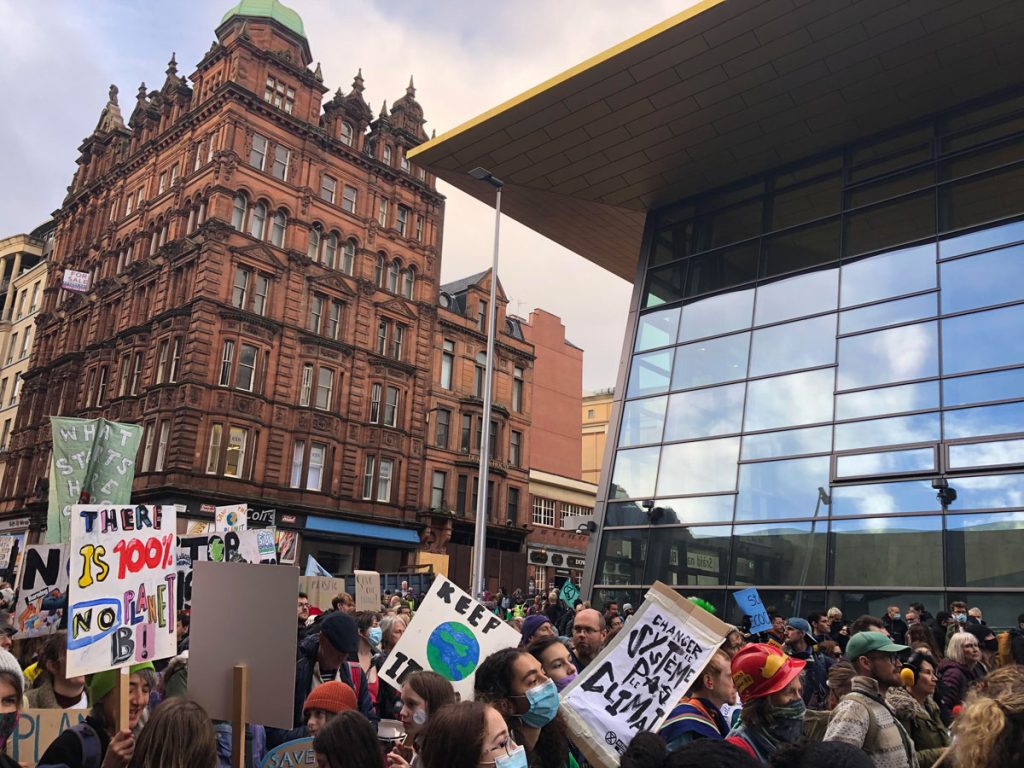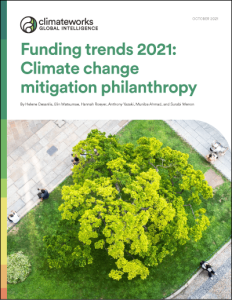ClimateWorks CEO Helen Mountford is taking on her new role with a stubborn sense of optimism for our climate future.

New ClimateWorks CEO Helen Mountford. Image courtesy of ClimateWorks.
Following former CEO Charlotte Pera’s departure from ClimateWorks to the Bezos Earth Fund last April, new CEO Mountford is stepping into the position with the hope of helping the philanthropy sector think bigger, faster, and more radically. Starting her role this week, she sat down with Alliance to reflect on the path ahead.
Elika Roohi: Congratulations on your new role. What are your hopes for ClimateWorks as you take on this position?
Helen Mountford: I’m very excited and very honoured to be taking on this role with ClimateWorks. We all know that the urgency to address the climate crisis has never been greater – and at the same time, we’re seeing the philanthropic community is rising to this challenge. We’re getting more funds than ever before, more new entrants in terms of climate philanthropy. We’ve got an ever-expanding and ever more complex set of funders. To meet this challenge, what we really need to do is work with them to move even faster in terms of climate philanthropy, think even bigger, and collaborate in even more radical ways together to ensure that all the different funds that are out there that are moving to support climate action really work well together. That’s where ClimateWorks comes in, helping to provide some of the much-needed intelligence and data that can bring together this broad philanthropic space and community and help them to make faster, better-informed investments – and we can also ensure this complementarity and this collaboration. And then, we want to use ClimateWorks’ own grantmaking to help fill critical gaps or kick-off exciting new areas of exploration and innovation. I’m really looking forward to joining and helping the ClimateWorks team and working with the whole philanthropic community to deliver what we need faster and at scale.
More and more, foundations are talking about how to apply a climate lens to all their areas of endeavour – because of course, climate intersects with everything. How does ClimateWorks help its grantees and the organisations it supports to integrate climate lenses across different areas of work?
There’s a growing recognition of just how far-reaching climate change is now, which means that as the climate crisis advances, it’s affects everything that people hold dear. So that means that climate action needs to be integrated across all sectors and all parts of the economy in order to have an impact. Now, obviously, I’m just starting with ClimateWorks, and I’m looking forward to getting to know even more about our grantees and the really exciting work that they are doing. But let me give one example, which is the Drive Electric Campaign. ClimateWorks is working together with a broad range of partners across different initiatives to push this audacious strategy to accelerate the end of internal combustion engine vehicles. That would deliver massive benefits for human health, for the economy, and for climate. This endeavour brings together the business sector; the health community; and those who are working with social and environmental justice because those are the communities that are most affected by air pollution. So, it’s an opportunity to work with a range of actors to deliver this transformation in a way that benefits people really around the world. ClimateWorks is seeing that it’s critical to look beyond the traditional climate environment space and actually bring together all of these different actors.
In September, we published a feature that looked at how slow philanthropic climate funding has been so far and asked: are green intermediaries the answer? What do you think?
What ClimateWorks and other intermediaries can do is help to amplify the impact that big foundations are having and to help support them and guide them. There are a couple of things: one, this landscape is so much more complex than it’s ever been before – the urgency and the need to address all the different challenges across climate means that we need to move much more quickly. A place like ClimateWorks can help to bring together that broader climate philanthropy landscape; provide that intelligence, insight, the convening, the resources, and the funders. Because of course, the big funders need to operate at the scale and speed.

European activists call for a just energy transition. Photo credit: Greg McNevin/Europe Beyond Coal.
Second, there is this incredible new momentum we’re seeing in the climate space, with new philanthropic funders – many of whom don’t know much about climate or what’s already going on in terms of climate investments. ClimateWorks can help to inform the spectrum, from the new individual high-net-worth individuals coming into the space through to the big philanthropic funders, some of whom will have their own teams and be doing major projects themselves, but want to still understand the broader landscape, as in: who else is doing what? what are the new emerging opportunities and also some of the challenges? So here ClimateWorks is supporting the breadth of the climate philanthropy landscape.
There is no real alternative… We have no option, need to tackle this.
And third, ClimateWorks itself can with its grantmaking target some of the gaps we see as we start to look across the landscape. We can see what’s moving, what’s not, and where there’s sort of potentially hugely impactful new solutions coming on the horizon, but which the big philanthropies aren’t yet willing to invest in and don’t know enough about. ClimateWorks can take that upfront risk to understand the opportunity. And then if it is big, the larger philanthropies can come after and take it to scale. One of the things I’ve seen at the World Resources Institute, where we’ve been a grantee of ClimateWorks, is how much value they bring by mapping and understanding this landscape of opportunities.
How does ClimateWorks identify the gaps in climate funding?
ClimateWorks does this fantastic mapping of the philanthropic space on climate mitigation, really understanding: where’s the funding going? how is that shifting? where’s our new funding coming from, and where it’s moving? This research helps the whole community understand what others are doing. So there’s that, but it’s combined with what they do in terms of intelligence, research, and programmes looking at specific areas and opportunities or actions – whether it’s shifting electric vehicles or looking at land use and forest and what can be done there, greening energy, greening the financial system. So really going into depth to understand that and working with other institutions.
How do you feel about the state of things following on from November’s COP?
I’d like to borrow a phrase from Christiana Figueres, who was the head of the UNFCCC a number of years ago and just a fantastic woman, and basically, I’d say I’m stubbornly hopeful. Perhaps it’s better to say more determined than ever. There’s a lot of momentum – we’ve seen a number of new pledges and commitments at COP26, particularly around Net Zero and this is from countries, cities, businesses, the finance sector, etc. So, on the face of these, we could actually get really quite far – potentially on track for a world where we would keep global warming at 1.8 degrees Celsius or somewhere around that. That’s much, much better than where we were coming out of the Paris agreement when we were closer to about a 3°C trajectory. But there’s a lot that needs to be delivered to turn these pledges into actual action that delivers the reductions on the ground. We need the short-term targets to align. The 2030 Nationally Determined Contributions right now, probably put us on track for something like 2.4°C instead. We need to update those. We need tools and approaches that can help corporates and investors align and understand science-based pathways to achieve these targets, and we need transparent data and approaches to hold them to account. It’s a critical role there for civil society and the youth movement. I think ClimateWorks can help for that accountability, as well as understanding those approaches.

School Strike for Climate protesters march down Glasgow Queen Street on 5 November 2021 during COP26.
Some of the things we didn’t see as much at COP 26 which we needed more of is on the solidarity side. We need solidarity and support for the vulnerable countries that are on the front lines of climate impacts today. The rich nations missed their commitment to deliver $100 billion in climate finance per year by 2020. There’s just not enough that came forward on loss and damage. Another area I think we need to work on this coming year is more engagement between those who are announcing those pledges and those who are going to hold them to account – whether that’s a youth movement or civil society. Right now, they’re speaking very different languages and we need to bring them together, and say: okay, what does a robust rigorous approach look like, and let’s make sure that those who are making these claims and announcements are sticking to it.
Speaking of funding loss and damage, when we were at COP, it really stuck out as something that should be foundational for anyone who says they’re for climate justice. Is funding loss and damage on the agenda for ClimateWorks?
It’s absolutely essential that we address loss and damage in a robust way for climate justice around the world. It is an area where I know ClimateWorks is doing some work. The overall approach of ClimateWorks is very much focused on rapid reductions of emissions towards Net Zero. So we’re focused more on the mitigation side. But this in turn will actually help reduce losses and damages, which are ultimately a sign that we failed to move at the pace needed to avert or adapt to climate impacts. But I know that in a couple of projects, we are tackling it first-hand, such as with the governance and diplomacy program which has long supported some of the advocates who consider loss and damage and progress to be a key litmus test for the seriousness of the UNFCCC and actually supporting vulnerable countries.
You were speaking earlier about the importance of accountability mechanisms for climate commitments. Do you think that would be useful in the philanthropy sector?
 One of the things ClimateWorks is already doing for the whole philanthropic community is tracking where climate philanthropy funds are going. And I think one clear story we want to be able to tell is about the impact of those funds. I look forward to learning more about how ClimateWorks has approached this important question of accountability, and what we can build on and do with the philanthropic community so that we can all be held accountable. Having been a grantee of ClimateWorks in my previous work, I believe philanthropy has played an essential role in helping drive real-world impact. I also believe that if we’re asking countries, businesses, cities to be held to account, we need to be held to account for what we commit to as well.
One of the things ClimateWorks is already doing for the whole philanthropic community is tracking where climate philanthropy funds are going. And I think one clear story we want to be able to tell is about the impact of those funds. I look forward to learning more about how ClimateWorks has approached this important question of accountability, and what we can build on and do with the philanthropic community so that we can all be held accountable. Having been a grantee of ClimateWorks in my previous work, I believe philanthropy has played an essential role in helping drive real-world impact. I also believe that if we’re asking countries, businesses, cities to be held to account, we need to be held to account for what we commit to as well.
You’ve been working in the climate space for many years. How have you seen it change over that time?
I have been over 25 years in the climate space, and it’s changed dramatically. I’d highlight three big shifts that I’ve seen, and there’s probably more, but there are three that I would say here. One, when I started off, climate change was something that environment ministries thought about, but nobody else. Those days are long gone. Most governments that we work with see it as a priority for the President or the Prime Minister and all the different ministries are involved in some way or another. You cannot achieve the climate action you need without all sectors being involved: energy, but also forest and land use, urban planners, industry etc. Something I remember before the Copenhagen COP, which was in 2009, at OECD, one of the projects I co-led was a major report for the economics community there. So we were speaking to economic and finance ministers about the economics of climate change, and I remember as we kicked off that work, all of the economic advisers and ministries from around the world had no clue what climate change was or why it was relevant to the economy. We had to introduce them to the basic concepts, to the understanding of this and that. And as we went through it, they started saying, wait a minute, we need to be part of this.
A second shift is that it cannot be government alone. At the start of my career, the idea was ok, government will solve this. Let’s pass it over to the environment ministry. Good luck. And now, it really is this feeling that we all need to work together. It’s businesses, civil society, academia, finance sector, states, cities, the climate movement, the youth – everybody needs to work together or it’s not going to happen.
And the third shift is in the perception that climate action will be costly and difficult to do. Before, there was this idea that there was a trade-off: do you want to grow your economy or do you want to address climate action? The way a lot of people were seeing it was that climate action will lead to loss of competitiveness, lost jobs, etc. And we’ve shifted away from that. Now, most of the people we engage with basically say they understand that tackling climate change is the only viable growth path of the future. It’s the only way we can move forward. There will be some transitional issues, absolutely. But there is no real alternative. There are no jobs on a dead planet. We have no option, need to tackle this.
Elika Roohi is Digital Editor at Alliance.



Comments (0)